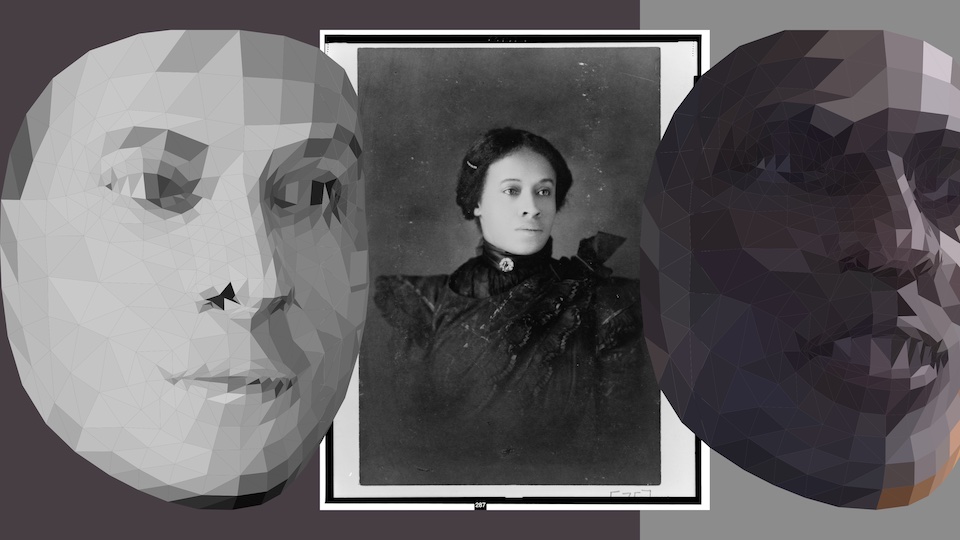a
Color Line 1900
John Henry Thompson 2021
The piece “The Color Line 1900” takes individual portraits from W.E.B. Du Bois’ 1900 Paris Exposition collection and contrast them with the observer today. It is an invitation for you - the observer - to reflect on what Du Bois said about the color line 118 years ago and how it is manifest in your life today.
In this piece, we have the portraits from the 1900 exhibit which are cast on the left as black and white facial recognition data and on the right we have the current observer captured as facial recognition data and summarized as colored triangles. The background color on the left is an average of the colors from the present - the computational “skin tone” projected into the past.
COLOR LINE - 1900: Inspiration
W. E. B. Du Bois was a Black scholar and sociologist who developed and curated an exhibit for display at the Paris World Fair of 1900 (Exposition Universelle Internationale de 1900). The purpose of this exhibit was to present to the world “(a) The history of the American Negro. (b) His present condition. (c) His education. (d) His literature.”
W. E. B. Du Bois (and Thomas J. Calloway, special agent for the Exposition) achieved this by planning, collecting and installing artifactsof the “Negro” condition in the form of 500+ photographs, 30+ striking models of data vizualization, numerous maps, and a display of 200+ books written by African Americans.
In pairing a vast and diverse spectrum of Black portraiture with the data and statistics of his charts and graphs, W.E.B. Du Bois humanizes the raw numbers by visually portraying the “American Negro” one generation after the civil war as a citizen IN SPITE OF American apartheid.
In 1903, W.E.B. Du Bois issued a dark observation that “…THE problem of the twentieth century is the problem of the color line - the relation of the darker to the lighter races of men in Asia and Africa, in America and the islands of the sea.”
I see the color line as an economic system which persists today and is based on the extraction of worth and wealth in an unidirectional way from the “darker to the lighter races” in America.
